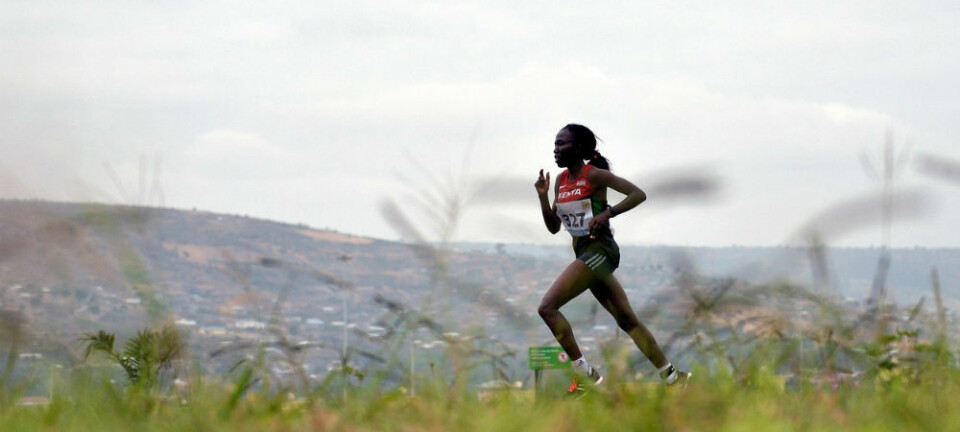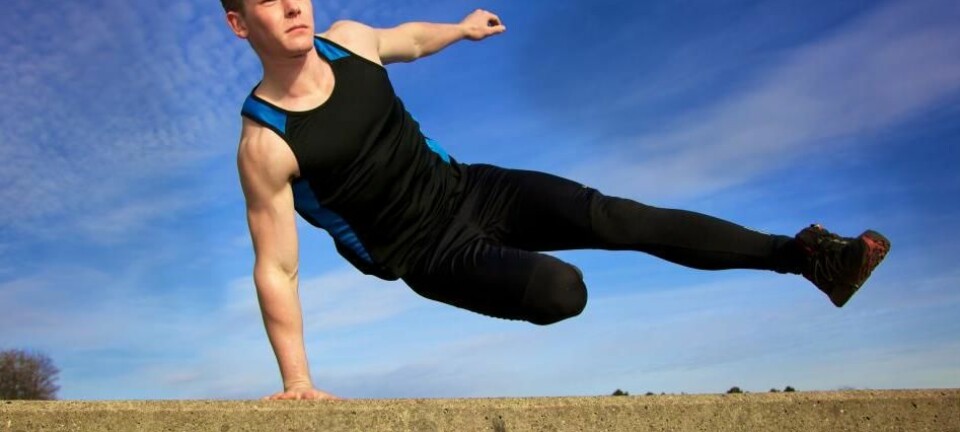
One step, or two steps at a time?
The job is the same, but what gives the best exercise?
The editorial staff here at ScienceNordic’s Norwegian partner, forskning.no, has to ascend a fairly steep set of stairs up to our lunchroom on the fourth floor. Some colleagues routinely use the lift, but they are of no consequence in this connection.
Those of us who use the stairs know we are getting more fit than they are – step by step.
Each of the 59 steps to our cafeteria is 18 centimetres high. All in all, it’s a vertical rise of 10.62 metres. This requires work equating to 6.2 kJ for a person who weighs 60 kg, 7.8 kJ for someone weighing 75 kg and 9.4 kJ for those tipping the scales at 90 kg. This energy expenditure is required, whether we ascend the steps in strides of one, two or three at a time.
But what gives the best exercise or training effect: One step at a time or two?
We took a first step toward and answer by ringing up a researcher.
Bigger and stronger
“From an exercise perspective it would be best to take two steps at a time, even though from a purely mechanical view the work would be the same,” says Associate Professor Tron Krosshaug at the Norwegian School of Sport Sciences (NIH).
Although two steps at a time halves the number of steps, each one becomes effectively twice as high.
“Our muscles have to work harder the deeper we bend,” says Krosshaug.
He would even recommend us to bend over extra deep for each step up if we want to get even more exercise.
“The deeper your bend, the larger the so-called moment arm. This means we have to generate more muscle power to counteract outer moment,” says the NIH researcher.
Moreover:
“Larger movements will also have a beneficial effect on the muscles. The muscles grow larger and stronger.”
“The muscle will work harder and bigger portions of it will be in action,” says Krosshaug.
What about stamina?
His assertion gets a wink and a nod from the UK.
“With two steps at a time you move slower but you use more force. Lots of force at low speed is better for building strength,” says Dan Gordon at the Anglia Ruskin University, Cambridge Campus in a podcast on The Naked Scientist.
Gordon adds that other considerations play in if a person’s goal is stamina.
“To gain stamina we have to keep at it longer without tiring out. This appears to favour one step at a time,” he explains.
Krosshaug begs to differ.
“The person who takes two or more steps at a time will probably get a greater effect regarding both strength and stamina. This is because the muscular work performed step by step is greater,” he says.
“But this will depend on the height of the steps, length of a person’s legs and how fit they are. The better your condition, the more steps you ought to take in each stride.”
Going down
Energy expenditure is of course much less when descending, but taking the stairs is still better than taking the lift.
“You activate muscles on the way down too, which means that you also develop muscle strength,” points out Krosshaug.
“To prevent injuries, however, it might be best to take short steps on the way down.”
Is there any point in daily life?
Then the question is: Does it really matter for the forskning.no staff to take the stairway – two steps at a time of course – up to our lunchroom?
“This definitely has an impact,” says Krosshaug. “And if you combine it with extra deep bends of your knees it can have a whole lot of importance.”
Still, this depends upon who you are.
“For [champion cross-country skier] Petter Northug this won’t contribute much to his total amount of training, unless we are talking about a stairway up a skyscraper or something. But if this is an older, perhaps unfit individual, it will bring about big improvements,” says the researcher.
Getting serious about stairs?
Running up stairs can get pretty hairy. An outdoor stairs race at Høyanger in Western Norway offers 1,268 steps. Kollenopp, a race up a hill in Oslo, consists of 800. Several towers and skyscrapers worldwide stage similar competitions.
If you are considering making this your way of exercising, Krosshaug has some basic words of advice.
“Whenever initiating a new activity it’s wise to start easy and increase your amounts and intensity of training gradually. If you have serious ambitions you need a good training plan. You should train different sets of exercises of different lengths, intensities and frequencies.”
“A serious stair-runner must choose the number of steps at a time that take the least amount of energy consumption,” continues Krosshaug.
One step at a time can result in a lot of movement and little headway. On the other hand, too many steps at a time will be too hard on the muscles.
“The challenge in running up steps is that a person’s strides might not match the stairs at hand. So, different stairs might be advantageous for different runners,” says the NIH researcher.
——————————————————-
Read the Norwegian version of this article at forskning.no
Translated by: Glenn Ostling
































